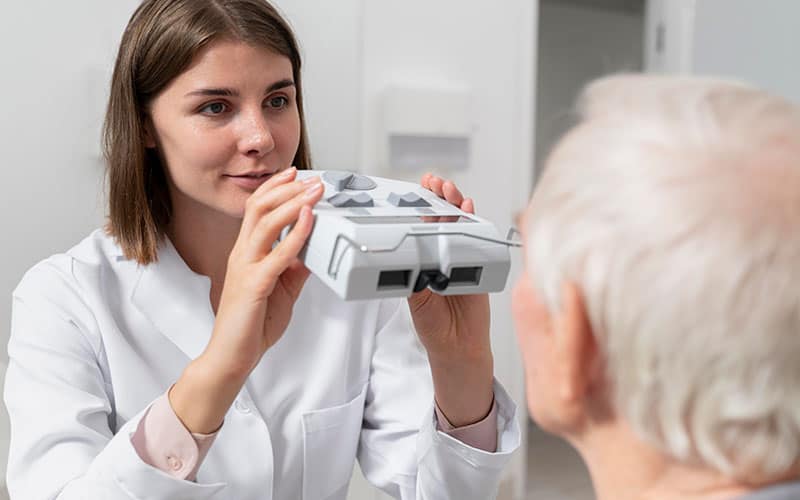Glaucoma silently threatens vision, often evading detection until irreversible damage occurs. Understanding how this condition is diagnosed is crucial for timely intervention and preserving eyesight.
Safeguard your vision with Diabetic Retinopathy Fundoscopy

How is Glaucoma Diagnosed: Unveiling the Procedure
Diagnosing glaucoma involves a multifaceted approach tailored to each individual. From symptom assessment to specialized tests, ophthalmologists employ various methods to uncover this stealthy condition.
Deciphering Signs and Symptoms: Critical Indicators for Glaucoma Diagnosis
While glaucoma may lurk without noticeable symptoms, recognizing potential red flags is vital. Peripheral vision loss, tunnel vision, haloes around lights, and sudden vision changes can signal underlying issues requiring evaluation.
Tools and Techniques: Understanding Glaucoma Diagnosis Methods
Ophthalmologists utilize a range of tools and techniques to diagnose glaucoma accurately:
- Tonometry: Measures intraocular pressure (IOP), a key risk factor for glaucoma.
- Gonioscopy: Evaluates the drainage angle of the eye to assess fluid outflow.
- Optic Nerve Evaluation: Utilizes advanced imaging techniques to assess optic nerve health.
- Visual Field Test: Maps peripheral vision to detect any abnormalities indicative of glaucoma.
Each method provides valuable insights into the condition, guiding treatment decisions and monitoring progression.
Challenges and Constraints: Factors Impacting Glaucoma Diagnosis
Diagnosing glaucoma presents unique challenges:
- Variability in IOP: Fluctuations in eye pressure throughout the day require careful monitoring.
- Asymptomatic Early Stages: Glaucoma may advance silently, underscoring the importance of regular eye exams for early detection.
- Importance of Early Detection: Given the irreversible nature of vision loss in glaucoma, early diagnosis is paramount for effective management and preserving visual function.
Navigating these challenges demands diligence and expertise from both patients and healthcare providers.
Conclusion: Safeguarding Your Sight: The Power of Early Diagnosis
Understanding the nuances of glaucoma diagnosis empowers individuals to take proactive steps in preserving their vision. Regular eye exams, awareness of symptoms, and open communication with healthcare providers are essential components of early detection and management.